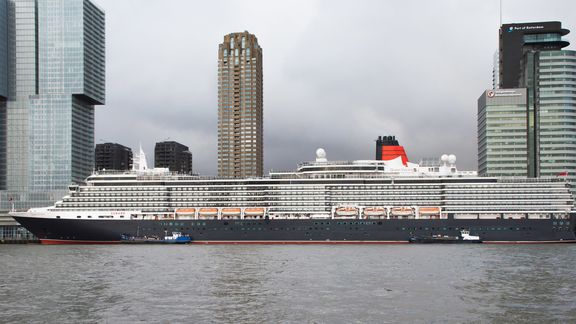Shore power for Cruise Port Rotterdam confirmed
The Municipal Executive has decided to invest in the shore power system of Cruise Port Rotterdam (CPR) and its proposal to the Municipal Council is to use Eneco resources for this.
It concerns an interest-free loan of a maximum of EUR 8.75 million. CPR expects to obtain the other half from subsidies. To this end, agreements have been made between the Port AuthorityF, CPR and the city authorities. The system is expected to be commissioned in 2024.

Alderman Arjan van Gils (Finance and Port) is a strong advocate of the construction: “The realisation of the shore power system has great social value for Rotterdam. With more than 100 cruise ships arriving each year, Cruise Port Rotterdam is important for the local economy and tourism in the city, but also causes air pollution. The use of shore power reduces pollution considerably. About 65% of the cruise ships calling at Rotterdam can make use of this.”
The Municipal Executive aims to connect 90% of the seagoing cruise ships that visit Rotterdam to shore power by 2030. Until now, there is no shore power supply and a generator continues to run to generate power. With the confirmed arrival of the shore power supply at Wilhelminakade, undesirable CO2 emissions will be reduced and the air quality will be greatly improved. The Municipal Council will study the Municipal Executive’s proposal. The Municipal Executive wants to use the Eneco resources to make the municipal contribution. The Municipal Executive will ask the Municipal Council for an agreement before the summer.
Cruise Port Shore Power BV (CPSP)
CPR (Cruise Port Rotterdam) has set up a new private limited company especially for shore power: CPSP. This party will become the owner of the shore power system and will take care of its operation and exploitation. CPSP chooses a rate model for cruise lines to pay, thus covering the costs of the system and repaying the subsidy from the municipality. CPR expects that the other half of the funds needed will be obtained from subsidies. Director Mai Elmar is happy with the decision: “The future of the terminal is now secured and we can continue with our beautiful, sustainable cruise port.”
Port Authority
The Port Authority will be the executive party. It makes its knowledge and experience available to install the shore power system and to apply for subsidies and permits. It believes it is still too early to indicate exactly what the shore power system should cost. This is also due to the current situation in Eastern Europe and the associated price increases. “The installation of shore power at Cruise Port Rotterdam fits in with the Port Authority’s policy to work together with the companies and the municipality on the port’s energy transition. Shore power plays an important role in this”, says Allard Castelein, CEO of the Port Authority.
Shore power in Rotterdam
Inland shipping has been making extensive use of shore power in the city centre for more than a decade now. In the port of Rotterdam, Stena Line’s terminal in Hook of Holland has shore power. In addition, Heerema will start using an shore power system for its offshore ships at Landtong Rozenburg next week.
Energy transition
Shore power is an important part of the energy transition. Ships moored at the quay often run on generators for the energy required on board. This involves emissions of, among other things, particulate matter, nitrogen and CO2. Shore power offers the opportunity to reduce these emissions by providing ships with a clean energy source.